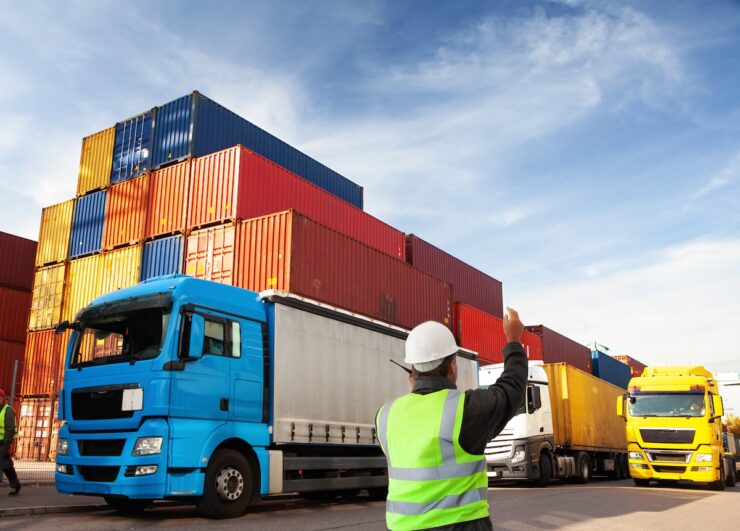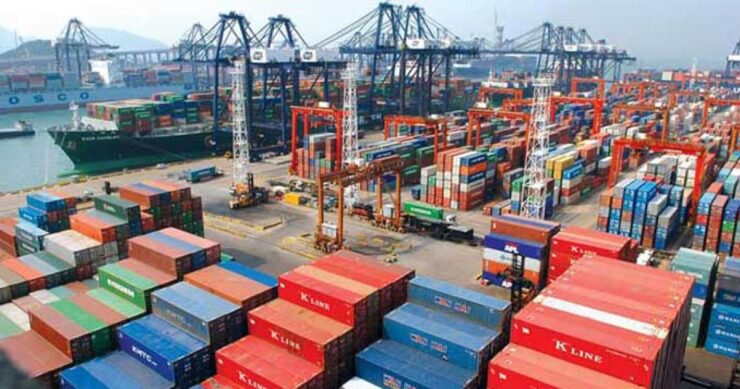It’s no secret that cross-border transportation can present a variety of challenges for businesses. From navigating different regulations and customs requirements to managing logistics across multiple countries, the process can seem daunting. However, with the right strategies and expert advice at your disposal, it’s possible to overcome these obstacles and streamline your cross-border operations.
Understanding Regulatory Frameworks: Navigating Legal Requirements

Each country has its unique set of rules, regulations, and standards that dictate the manner of import and export. Businesses must equip themselves with extensive knowledge of these requirements to prevent potential legal issues, reduce unexpected costs, and ensure a smooth transportation process or outsource their transportation operations to companies like Qube Cargo. Staying informed about these dynamic regulations is a constant process, often complicated due to the vast range of information that needs to be consumed.
In overcoming these challenges, proactive research and analysis should be prioritized. Consult with experts, and invest in legal counsel or services that specialize in international trade laws. Understanding these complex laws will not only ensure compliance but also enable businesses to identify and leverage advantageous trade agreements. Building this expertise is an essential foundation for any successful cross-border operation.
Managing Customs and Border Control: Efficient Documentation and Procedures
Incorrect or incomplete documentation can result in costly delays or the seizure of goods. For businesses, streamlining these processes is crucial to ensure timely delivery and maintain customer satisfaction. The role of accurate, comprehensive documentation cannot be overstated. It includes everything from correctly filled customs declarations to appropriate labeling of goods.
Mastering local customs procedures can significantly enhance the efficiency of the transportation process. In some cases, there are expedited procedures for businesses with a solid track record of compliance or for particular types of goods. The key is understanding how to leverage these opportunities. Also, consider employing customs brokers who are experts in their field, who can guide the process, and liaise with customs officers on your behalf.
Logistics and Supply Chain Optimization: Streamlining Cross-Border Operations
In the realm of cross-border transportation, optimization of logistics and supply chain processes is a critical element for business success. Efficient logistics can significantly reduce costs, lead times, and risk, resulting in an enhanced competitive advantage. This involves making strategic decisions about modes of transport, transit routes, warehousing, and distribution centers.
One of the first steps in streamlining cross-border operations is effective demand planning and inventory management. By accurately predicting demand and managing inventory, businesses can avoid overstocking or understocking, leading to significant cost savings. It also enables a just-in-time approach, which minimizes warehousing needs and associated expenses.
Technology plays a significant role in supply chain optimization. Solutions such as Transportation Management Systems (TMS) can help manage logistics more effectively, offering features like route optimization, real-time tracking, and analytics. Also, exploring the advantages of intermodal transport – using a combination of road, rail, and sea – can offer cost and environmental benefits. Each situation will have its optimal solution, and finding it requires thoughtful analysis.
Cultural and Language Considerations: Effective Communication Strategies

Cross-border transportation is not just about moving goods; it involves dealing with people from various cultures and languages. Misunderstandings can cause unnecessary delays, negatively affect relationships, and potentially harm your business’s reputation. Therefore, cultivating effective communication strategies is crucial for successful international operations.
Firstly, invest in language and cultural training for staff members involved in international operations. This education does not only include learning a new language but also understanding the cultural nuances that can influence business interactions. For example, understanding how to properly greet a business partner, the acceptable business etiquette, or negotiation practices in a specific culture can make a considerable difference.
Communication in cross-border transportation also extends to written materials. Ensuring that your documentation is accurately translated and understandable for your partners can avoid misunderstandings that could lead to delays or penalties. Engage professional translation services or bilingual staff for this task, and consider cultural nuances in your written communication, as well.
Financial and Currency Management: Mitigating Exchange Rate Risks

Financial and currency management plays a pivotal role in cross-border transportation. The fluctuation of exchange rates can significantly impact the costs of your operations, and potentially affect profitability. Thus, understanding and managing these risks is essential for any business involved in international trade.
One way to mitigate exchange rate risks is through forward contracts. These financial instruments allow businesses to lock in a specific exchange rate for a future date, providing certainty regardless of market fluctuations. This certainty can be especially useful in planning and budgeting for future cross-border transportation operations.
Another strategy is to maintain foreign currency accounts. If your business regularly deals with particular currencies, having accounts in those currencies can enable you to choose the most favorable time to convert currencies, potentially resulting in significant savings.
Risk Assessment and Security: Ensuring Safe Transport of Goods

Transporting goods across borders presents numerous risks – from damage or theft of goods to geopolitical instability or unexpected weather events. A comprehensive risk assessment and a robust security strategy are crucial to mitigate these potential threats.
Insurance plays a vital role in mitigating transportation risks. Comprehensive coverage can protect against a variety of scenarios – from lost or damaged goods to delays due to unexpected circumstances. It’s also crucial to understand the terms and conditions of your coverage, as well as any potential exclusions.
Technology can also be a powerful tool in enhancing the security of your goods. GPS tracking, tamper-evident seals, and smart locks can all contribute to ensuring the safe transport of your goods. Implementing these tools, along with a well-planned risk management strategy, can significantly reduce the potential challenges in cross-border transportation.
Building Collaborative Partnerships: Establishing Strong Relationships with International Stakeholders

Finally, successful cross-border transportation relies heavily on establishing and maintaining strong relationships with international stakeholders. These include not only your customers and suppliers but also customs officials, local authorities, and transportation providers. Cultivating these relationships can lead to smoother operations, faster problem resolution, and potential opportunities for collaboration.
Fostering open, honest communication with all partners is a key ingredient in building strong relationships. Regular updates, timely responses to inquiries, and transparency in dealings can enhance trust and cooperation.
Equally important is respecting and understanding the cultural norms and expectations of your international partners. This understanding can prevent misunderstandings, foster better communication, and ultimately lead to stronger, more productive relationships.
Lastly, always remember the value of face-to-face meetings, even in an increasingly digital world. Personal visits can solidify relationships, demonstrate your commitment, and provide valuable on-the-ground insights. As the saying goes, people do business with people – and this holds especially true in the world of cross-border transportation.
In conclusion, while the challenges of cross-border transportation are numerous and complex, they are far from insurmountable. With knowledge, planning, and the right strategies, businesses can navigate these challenges successfully and seize the immense opportunities that global trade offers.

